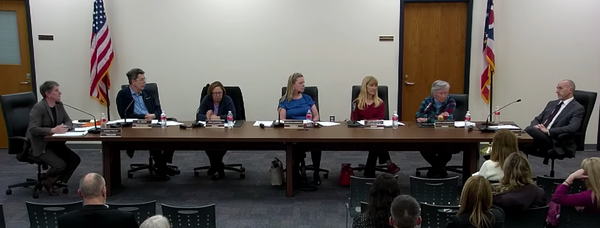Dynamism in Retreat
It may come as a surprise that Americans are less likely to start a business, move to another region of the country, or switch jobs now than at any time in recent memory. But dynamism is in retreat nationwide and in nearly every measurable respect.
[3d-flip-book id=”215″ ][/3d-flip-book]
Share of employment in new companies

Percent of the population moving across state lines

Job turnover rate

Conventional wisdom seems to accept the idea that too much churn and destruction now plague wide swaths of the American economy. The latest economic data, however, turns this conclusion on its head. The United States actually suffers from a problem of too little creation—not too much destruction—perhaps for the first time in its history. Our economic and job creation engine is rapidly slowing down.
America’s economic engine is losing steam.
Consider this: In spite of massive changes throughout the global economy, the rate at which businesses close has remained fairly steady in the United States over the past 40 years. In contrast, the rate of new business formation has plummeted, falling by half since the late 1970s—including a severe decline during the Great Recession. From small mom and pop storefronts to high tech startups, new businesses are simply scarcer than ever.
Why does this matter? New firms are the “creative” part of creative destruction. They help keep the economy in a constant state of rebirth, serving to replace dying industries, foster competition with incumbent companies, and produce new, higher wage jobs. When they disappear, the cycle of creative destruction falls out of balance. That is the core economic problem America faces today.

In short, we’ve lost the economic dynamism that powered U.S. prosperity for the past century.
No matter how you measure it, dynamism is fading from the map. As a result, we now have more inequality in and among our communities, lower wages for our workers, and less competition in our markets.
The Great Recession marked a historic turning point for the creation of new businesses.
Something jarring occurred with the onset of the Great Recession which threw the cycle of creation in the economy dramatically out of balance. For the first time, the United States experienced a collapse in new business creation so severe that companies were dying faster than they were being born.
Annual difference between firm births and deaths in the U.S. economy

The number of businesses being added to the economy has ground to a halt over time. During the recovery period from 2010 to 2014, the economy added just over 100,000 firms. Compare that to a prior era—the recovery from 1983 to 1987—when the size of the national economy was much smaller than it is today and the United States generated an increase of nearly half a million new businesses.
Total increase in the number of firms nationwide

Declining dynamism is a driving force behind regional inequality.
It’s not simply that the rate and number of new businesses is declining; the preponderance of business creation is now intensely concentrated in a handful of metropolitan hubs that have managed to maintain resiliency amidst the national slowdown. We are now seeing historically low levels of new companies being born in many corners of America—from the industrial Midwest to the rural South to the urban centers of the Northeast.
From 2010 to 2014, five metro areas—New York, Miami, Los Angeles, Houston, and Dallas—produced as big of an increase in businesses as the rest of the nation combined.
The metro areas powering the national increase in firms over four recent expansions

Historically, one of America’s great strengths was its ability to generate economic activity relatively evenly throughout the country. Prior to 2008, the vast majority of metro areas throughout the country saw more businesses open than close every year. In fact, the number of metro areas adding businesses in a given year never fell below 80 percent—even during recessions. Everywhere you looked, the tide of American businesses was rising.
Number of metro areas in which the business death rate exceeds the business birth rate (Total = 366)

This trend reversed entirely with the Great Recession, when nearly nine out of ten metro areas started to shed businesses faster than they could open. Things aren’t close to returning to normal. Five years into the recovery, more than 60 percent of metro areas continued to lose more firms than they were creating. Only one in seven of them now keeps pace with the national startup rate.
Metro area firm birth and death rates

The rapid retreat of dynamism from all but the largest and fastest-growing metro areas intensifies the geographic inequality being felt across the country—and the most vulnerable areas are falling the furthest behind.
The age of diminished dynamism is shaping up to be the golden age of incumbency.
The average firm is now older than it has ever been, and a record 74% of the workforce is employed by one of these aging incumbents, who face less and less competition as the pipeline of new business formation dries up.


Between 1997 and 2012, two-thirds of America’s industries saw an increase in market concentration, and the four largest companies captured at least 25% of the market in nearly half of all industries in the United States.
Meanwhile, profits have reached exceptionally high levels as industries become more and more concentrated in the hands of a few dominant players.


Rising concentration across the economy means fewer opportunities for American workers.
People feel the impact of diminishing economic dynamism most acutely in the job market. New businesses are an important source of demand for workers and the primary generator of the jobs of the future.
Missing new companies cost nearly 1 million U.S. jobs in 2014 alone.

In fact, new businesses are responsible for nearly all the net new jobs in the U.S. economy. Incumbent companies shed more workers than they hire in most years.
Average net annual job creation by firm size (1992-2014)

With fewer job options comes less leverage for workers, and slower wage growth. Labor force participation rates have taken a hit too.
It’s not too late to reverse these trends, but we must act now.
We are undoubtedly in the midst of a complicated and challenging era for the American economy, one which requires new and urgent responses from our policymakers.
However, the headwinds are strong. Policymakers must prepare a multifaceted offensive at every level of government.
Economic policy should be viewed through a new lens—with a focus on addressing geographic inequality and business creation first and foremost.
The retreat of dynamism is a one of the most urgent and fundamental economic challenges facing the new Congress and new Administration.
No one silver bullet can solve these problems—indeed we still know too little about their underlying causes. One thing is certain, though: If we can make the economy work again for entrepreneurs in a greater cross-section of America, we can start to rebuild the broken pathways to the American dream.
Policymakers can start by asking the right questions:
- What is the best way to foster a policy environment that supports new business creation?




